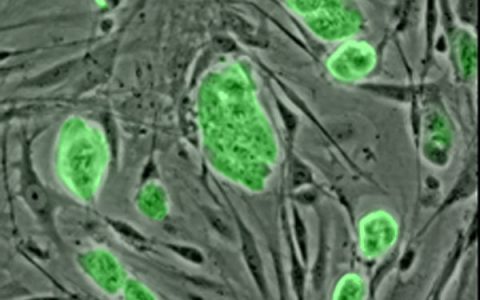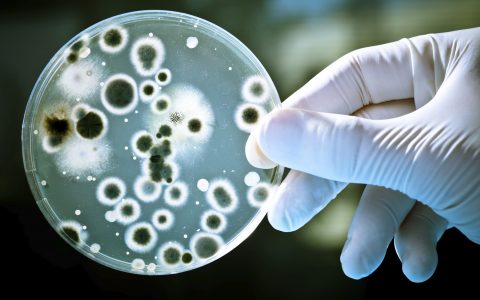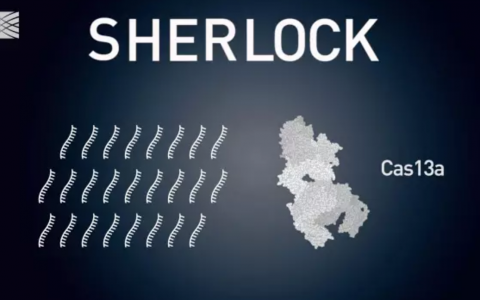
美国高级情报官员认为,基因编辑是一种大规模杀伤性武器。使用方便,难于控制。美国情报界将CRISPR视为一种对国家安全的威胁。
[su_tabs]
[su_tab title=”中文报道”] 美国情报界将CRISPR视为一种对国家安全的威胁。
美国国家情报总监詹姆斯·克拉珀(James Clapper)在本周二的美国情报界年度全球威胁评估报告中,将“基因编辑”列入了“大规模杀伤性与扩散性武器”威胁清单中。
基因编辑是指在活细胞内改变DNA的几种新技术。其中使用最为普遍的是CRISPR,它在科学研究中起到了革命性的作用,由此产生了一些新物种,同时,还可能会推动新一代基因治疗在严重疾病领域内的应用。
根据该报告的评估,基因编辑的相对易用性使得美国情报界十分担忧。报告称:“鉴于这种有双向用途的技术分布广泛、成本较低、发展迅速,任何蓄意或无意的误用,都可能会引发国家安全问题或严重的经济问题”。
美国间谍首脑公开警告基因编辑是一种潜在的大规模杀伤性武器(WMD)这一做法,令一些专家大为吃惊。它是六种传统威胁中唯一的一种生物技术,所谓的传统威胁,类似于1月6日疑似在朝鲜境内发生的核爆炸、叙利亚内未公开的化学武器、以及可能违反国际条约的俄罗斯新型巡航导弹。
该报告是中央情报局、国家安全局、以及其他六个美国间谍和情报收集机构“集体智慧”的非保密版。
虽然报告中没有明确提到CRISPR,但是克拉珀显然考虑到了最新、最为通用的基因编辑技术。CRISPR技术的低成本和相对易于使用的特征,似乎已经吓坏了美国的情报机构,毕竟只需花60美元便可以在网上买到其中最基本的材料。
该报告还称:“对于一些国家主导的基因组编辑研究,其监管要求或道德标准与西方国家有很大的不同,这可能会增加制造潜在有害生物或产品的风险”。
产生这种担忧的主要原因是,生物技术属于一种“双向用途”技术,也就是说正常的科学发展也可以作为武器使用。该报告还指出了一些新的发现,“在经济全球化的背景下,找到具有相关专业知识和技术的人员也变得更加容易了。”
克拉珀没有提出任何特定的生物武器猜想,但是科学家们此前已经在猜测,CRISPR是否可以用来制造“蚊虫杀手”,是否可以制造摧毁农作物的灾害,甚至是直接破坏人类DNA的病毒。
“相对于其他领域,生物技术更加有可能为人类带来福祉,但是也极有可能会被滥用,”丹尼尔·格斯坦(Daniel Gerstein)说,他是兰德公司(RAND)的高级政策分析师及前美国国土防御部的副部长。他认为:“我们担心人们开发某种具有强大能力的病原体,但是我们也同样担忧错误应用的可能性。由于基因组是生命的本体,因此,我们可能会面临基因编辑所造成的灾难性事件。”
皮尔斯·米利特(Piers Millet)是华盛顿特区威尔逊国际学者中心(Woodrow Wilson Center)的生物武器专家,他认为克拉珀单独将基因编辑挑选出来列入大规模杀伤性武器的列表中,是“令人惊讶”的,因为制造生物武器—— 例如炭疽病毒 ——仍然需要掌握一系列的相关技术。
冷战时期达成的禁止细菌(生物)及毒素武器的发展条约,宣布生物武器项目是不合法的。美国、中国、俄罗斯、以及其他172个国家签订了这个公约。2015年9月在华沙会晤讨论这个公约的专家们考虑到生产生物武器的复杂性,认为恐怖组织开发生物武器仍然是一件比较遥远的事情。专家组认为“在可以预见的未来,仅有少数国家具有相关的应用能力。
该情报评估还特别指出,需要关注利用CRISPR技术编辑人类胚胎,从而导致下一代人产生遗传变异的可能性。基因组编辑在2015年内的迅速发展迫使美国与欧洲的一些知名生物学家,对人类生殖细胞系(与生殖相关的细胞)基因编辑的无监管状态提出了质疑,因为它可能会导致遗传基因的改变。
到目前为止,对于改变下一代基因的争论主要还是限定在伦理范畴内,而上述报告中并没有说明什么样的研发才可能被视为一种大规模杀伤性武器。但设计某种能通过改变基因来杀伤人类病毒,这种可能性还是存在的。 [/su_tab]
[su_tab title=”原文”]
That’s according to James Clapper, U.S. director of national intelligence, who on Tuesday, in the annual worldwide threat assessment report of the U.S. intelligence community, added gene editing to a list of threats posed by “weapons of mass destruction and proliferation.”
Gene editing refers to several novel ways to alter the DNA inside living cells. The most popular method, CRISPR, has been revolutionizing scientific research, leading to novel animals and crops, and is likely to power a new generation of gene treatments for serious diseases (see “Everything You Need to Know About CRISPR’s Monster Year”).
It is gene editing’s relative ease of use that worries the U.S. intelligence community, according to the assessment. “Given the broad distribution, low cost, and accelerated pace of development of this dual-use technology, its deliberate or unintentional misuse might lead to far-reaching economic and national security implications,” the report said.
The choice by the U.S. spy chief to call out gene editing as a potential weapon of mass destruction, or WMD, surprised some experts. It was the only biotechnology appearing in a tally of six more conventional threats, like North Korea’s suspected nuclear detonation on January 6, Syria’s undeclared chemical weapons, and new Russian cruise missiles that might violate an international treaty.
The report is an unclassified version of the “collective insights” of the Central Intelligence Agency, the National Security Agency, and half a dozen other U.S. spy and fact-gathering operations.
Although the report doesn’t mention CRISPR by name, Clapper clearly had the newest and the most versatile of the gene-editing systems in mind. The CRISPR technique’s low cost and relative ease of use—the basic ingredients can be bought online for $60—seems to have spooked intelligence agencies.
“Research in genome editing conducted by countries with different regulatory or ethical standards than those of Western countries probably increases the risk of the creation of potentially harmful biological agents or products,” the report said.
The concern is that biotechnology is a “dual use” technology—meaning normal scientific developments could also be harnessed as weapons. The report noted that new discoveries “move easily in the globalized economy, as do personnel with the scientific expertise to design and use them.”
Clapper didn’t lay out any particular bioweapons scenarios, but scientists have previously speculated about whether CRISPR could be used to make “killer mosquitoes,” plagues that wipe out staple crops, or even a virus that snips at people’s DNA.
“Biotechnology, more than any other domain, has great potential for human good, but also has the possibility to be misused,” says Daniel Gerstein, a senior policy analyst at RAND and a former under secretary at the Department of Homeland Defense. “We are worried about people developing some sort of pathogen with robust capabilities, but we are also concerned about the chance of misutilization. We could have an accident occur with gene editing that is catastrophic, since the genome is the very essence of life.”
Piers Millet, an expert on bioweapons at the Woodrow Wilson Center in Washington, D.C., says Clapper’s singling out of gene editing on the WMD list was “a surprise,” since making a bioweapon—say, an extra-virulent form of anthrax—still requires mastery of a “wide raft of technologies.”
Development of bioweapons is banned by the Biological and Toxin Weapons Convention, a Cold War–era treaty that outlawed biological warfare programs. The U.S., China, Russia, and 172 other countries have signed it. Millet says that experts who met in Warsaw last September to discuss the treaty felt a threat from terrorist groups was still remote, given the complexity of producing a bioweapon. Millet says the group concluded that “for the foreseeable future, such applications are only within the grasp of states.”
The intelligence assessment drew specific attention to the possibility of using CRISPR to edit the DNA of human embryos to produce genetic changes in the next generation of people—for example, to remove disease risks. It noted that fast advances in genome editing in 2015 compelled “groups of high-profile U.S. and European biologists to question unregulated editing of the human germ line (cells that are relevant for reproduction), which might create inheritable genetic changes.”
So far, the debate over changing the next generation’s genes has been mostly an ethical question, and the report didn’t say how such a development would be considered a WMD, although it’s possible to imagine a virus designed to kill or injure people by altering their genomes.
[/su_tab]
[/su_tabs]
本文编自:麻省理工科技评论(微信公众号: mit-tr)和 MIT Technology Review
原创文章,如若转载,请注明出处。






